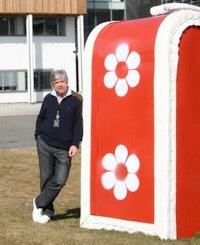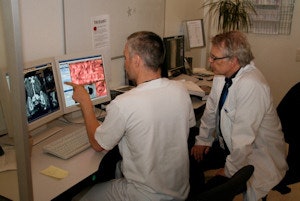
Unrest is growing among radiologists and other healthcare professionals over drastic restructuring measures that are having a substantial impact on clinical practice in Norway.
During recent times, Oslo has enjoyed a disproportionate share of the government's health budget. Differences in regional spending were made public several years after the state took over hospitals from regional and local control in 2002 -- a move intended to curtail seemingly unmanageable overspending on national healthcare.
While greater financing in Oslo was initially tolerated due to its status as the national center for oncology and transplantation, increasing public outcry over the discrepancy in funding led to proposals for downsizing measures that are due to be implemented between now and 2013. These measures include sweeping cuts in on-call hours and parallel services, culminating in the merger of three university hospitals spread across four locations that started last year.
 The government's healthcare restructuring is a big issue for Norwegian radiology, according to Dr. Frode Laerum. All images courtesy of Laerum.
The government's healthcare restructuring is a big issue for Norwegian radiology, according to Dr. Frode Laerum. All images courtesy of Laerum."There were a lot of protests about this merger. It's a big issue, not just in Oslo, but elsewhere in the country where the government wanted to centralize health services into larger regional hospitals, and remove or reduce small local hospitals," said Dr. Frode Laerum, a radiologist at Akershus University Hospital (Ahus). Ahus is the government's 2008 rebuild that cost around 1 billion euros (approximately $1.4 billion U.S.).
The merged hospitals, now called Oslo University Hospital, will in the future have two main campuses, Ullevål University Hospital and Rikshospitalet (the National Hospital) in addition to the oncology site Radiumhospitalet. One site, Aker University Hospital, is closing down by the end of next year. As a result, 180,000 inhabitants have been moved to the Ahus, located 20 km outside Oslo, and now serving 500,000 people.
Meanwhile, employees at the overstaffed merged hospital were offered relocation to Ahus, or they faced potential redundancy. The merged Oslo University Hospital serves a local population of 380,000, but has several national and regional special functions, allowing it to retain more radiology positions than first anticipated. At present it is not yet clear how many radiologists will lose their jobs in the merger, but many have already relocated, while affected departments fight to protect existing posts.
Legally the government was obliged to provide employees with a feasible alternative, but the definition of "feasible" is highly subjective, doctors argue. In addition, a lack of clear communication about plans meant healthcare staff didn't fully understand what was happening until late in the process.
"For some, traveling 20 km outside the city or elsewhere is not feasible," said Laerum, who took a post at Ahus before the current reorganization took place. "If employees refuse the alternative, the government's legal obligation to them ends."
The implications of the merger were more quickly understood by employees in administrative departments, but there was resistance to believing that one of the three thriving university hospitals was really closing, and a failure among front-line staff to understand that they should take positions offered at Ahus.
"This was unprecedented," said Dr. Anagha Parkar, a radiologist at Haraldsplass Diakonale Sykehus in Bergen, Norway. "Norwegian job identity is bound by geography or institution. In our society, we stay in jobs for life. Usually these jobs are well protected."
 Radiologists discuss a case at Akershus University Hospital.
Radiologists discuss a case at Akershus University Hospital.What makes the situation more infuriating and incomprehensible for some is that the closing hospital had just invested 15 million euros (approximately $21 million U.S.) in a new infectious disease department that was only open for several months before it closed.
Doctors agree the merger will change intervention and the shape of radiology in the region for years to come; as subspecialties such as uroradiology are concentrated in one physical location, knowledge and competence of subspecialists in other places will effectively be lost as patients are moved from them.
While the government's strategies to support socialized medicine through increased investment in primary healthcare services are well intended, they are considered by some to be naive at best, at worst Winston Churchill's "equal division of misery."
"The long-term implication that politicians can push through an unwanted process is frightening, and I worry that they might impose similar changes on other regions," Parkar said.
Laerum pointed to a general belief that merging three hospitals has, in the short to mid term, caused more problems than it has solved. He conceded, however, that there may be improvements in the long term, including the potential reorganization of outdated systems.
"There's a chance that in several years professional structures will be more robust. Some protocols, guidelines, and common practices for referrals will be established. Such a process might also facilitate the reorganization of public radiology services," he said.



















